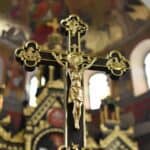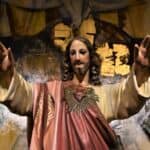Introduction
The Church of the Holy Sepulchre, located in the heart of Jerusalem’s Old City, is one of the most sacred sites in Christianity. It is believed to be the place where Jesus Christ was crucified, buried, and resurrected. As a major pilgrimage destination for Christians worldwide, the church holds profound religious, historical, and architectural significance. Over centuries, it has been a symbol of faith, resilience, and devotion.
Historical Background
The history of the Church of the Holy Sepulchre dates back to the 4th century when Emperor Constantine the Great, under the influence of his mother, Saint Helena, ordered its construction. In 326 AD, Saint Helena visited Jerusalem and identified the site of Jesus’ crucifixion (Golgotha) and His tomb. Constantine then commissioned the building of a grand church to commemorate these sacred events.
The original church was completed in 335 AD but suffered destruction and rebuilding multiple times due to conquests, earthquakes, and fires. The Persians destroyed it in 614 AD, the Muslims damaged it in 1009 AD, and it was later restored by Byzantine, Crusader, and other Christian rulers. Despite these challenges, the Church of the Holy Sepulchre has stood the test of time, remaining a central place of worship and pilgrimage.
Architectural and Religious Significance
The Church of the Holy Sepulchre is a vast and complex structure that houses several important Christian sites. The architecture is a mix of Byzantine, Crusader, and later influences, reflecting the different periods of its construction and renovation.
Key Sections of the Church:
- The Stone of Anointing – Located near the entrance, this stone is believed to be where Jesus’ body was prepared for burial after the crucifixion. Pilgrims often kneel and touch the stone as a sign of reverence.
- Golgotha (Calvary) – The site where Jesus was crucified is located within the church. A chapel marks this sacred spot, and visitors can see the rock of Calvary beneath an altar.
- The Aedicule (Tomb of Jesus) – At the heart of the church stands the Aedicule, a small shrine that encloses the tomb where Jesus was buried and later resurrected. Pilgrims wait in long lines to enter and pray inside this holy space.
- The Rotunda – This circular space surrounds the Aedicule and features a massive dome with beautiful decorations, symbolizing the divine presence.
- The Catholicon – The central worship area of the church, used for important Christian ceremonies and shared by multiple Christian denominations.
- The Chapel of St. Helena – A lower-level chapel that commemorates Saint Helena’s role in discovering the True Cross of Christ.
Christian Denominations and Control
One unique aspect of the Church of the Holy Sepulchre is its division among different Christian communities. The Roman Catholic, Greek Orthodox, and Armenian Apostolic Churches share responsibility for maintaining and managing the church. The Coptic Orthodox, Syrian Orthodox, and Ethiopian Orthodox Churches also have small chapels within the complex.
Due to historical disputes over ownership, a Status Quo agreement was established in 1853 under Ottoman rule, regulating the use of the church among different Christian groups. Interestingly, the keys to the church have been entrusted to a Muslim family for centuries to prevent conflicts among the Christian sects.
Religious Importance and Pilgrimage
The Church of the Holy Sepulchre is one of the most visited Christian sites in the world. Pilgrims from all over the globe come to walk the Via Dolorosa, the path Jesus took on His way to crucifixion, and to pray at the tomb where He was laid to rest.
The church is especially significant during Easter, when thousands of Christians gather for processions and the Holy Fire ceremony. This ancient tradition takes place on Holy Saturday, where a miraculous flame is believed to emerge from the tomb of Jesus, symbolizing His resurrection.
Visiting the Church of the Holy Sepulchre
Visitors to the Church of the Holy Sepulchre experience a deep spiritual atmosphere filled with devotion and history. The church is open to people of all faiths, though it is primarily a place of Christian worship.
While visiting, it is important to dress modestly, as it is a sacred site. Photography is generally allowed, but visitors should be respectful of worshippers engaged in prayer. Exploring the church can take several hours due to its historical significance and the large number of pilgrims.
Conclusion
The Church of the Holy Sepulchre stands as a timeless testament to the faith, perseverance, and unity of Christianity. As the site of Jesus’ crucifixion, burial, and resurrection, it remains the heart of Christian belief and a place of deep spiritual significance.
Through centuries of destruction, rebuilding, and religious disputes, the church has endured as a beacon of hope and devotion. For believers, visiting this sacred site is a profound and transformative experience, connecting them to the foundation of their faith and the story of Jesus Christ.




